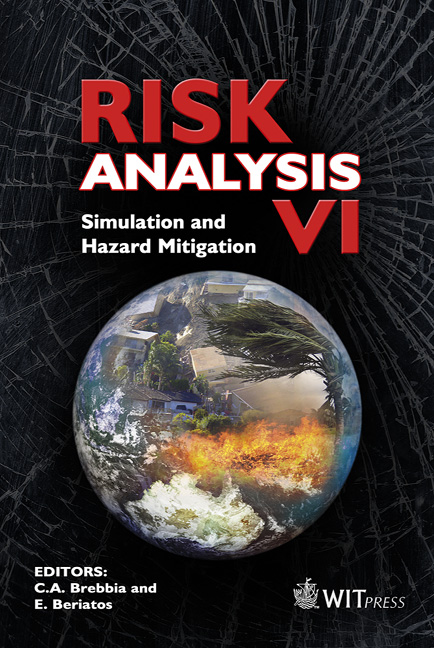Climate Change And Disaster Management: Reducing Risk, Saving Lives
Price
Free (open access)
Volume
39
Pages
9
Page Range
379 - 387
Published
2008
Size
397 kb
Paper DOI
10.2495/RISK080371
Copyright
WIT Press
Author(s)
K. Duncan
Abstract
Recently, there has been a disturbing increase in the number of natural disasters: for example, in 1998, Hurricane Mitch caused 7,500 deaths in El Salvador, Guatemala, Honduras, and Nicaragua, and flooding in China affected 180 million people, destroyed nearly seven million homes, and killed close to 4,000 people. In 1999, a cyclone in India affected 10–15 million people and killed 10,000; and in 2000, floods in Mozambique left 330,000 homeless, and killed 500 people. Natural disasters of medium size and stronger caused at least 25,000 deaths around the world in 2001, more than double the number of the previous year, and economic losses of US $36 billion. More recently, human-made and natural disasters in 2004 claimed more than 21,000 lives worldwide and economic losses of US $105 billion. The year 2005 further tested the international relief community with ‘unparalleled frequency and scale of natural disaster’; Hurricane Katrina alone destroyed 300,000 homes, displaced 770,000 people, and cost US $200 billion. In the future, climate change is likely to mean higher maximum temperatures and more intense precipitation (with concomitant increased avalanches, floods, mudslides, etc.). Because disaster response professionals and emergency managers from all levels of government, the military, the private sector, and volunteer organizations are often the first people ‘on the ground’ during/following an extreme weather event, this paper will explore what climate change may mean for disaster managers, how climate change may affect the environments in which they work, and how best to reduce risks, and save lives. Keywords: climate change, heat waves, extreme weather events, disaster management.
Keywords
climate change, heat waves, extreme weather events, disaster management.





